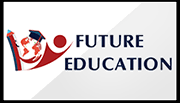THE DEVELOPMENT OF CULTURAL-BASED MATHEMATICS MEDIA USING AUGMENTED REALITY 3D WITH ETHNOMATHEMATICS CONCEPT TO SUPPORT INDEPENDENT LEARNING
DOI:
https://doi.org/10.17501/26307413.2023.6104Keywords:
augmented reality , , ethnomathematics, learning mediaAbstract
This research aims to develop 3D augmented reality mathematics learning media with ethnomathematical concepts to support the independent learning program. Mathematic SASAMBO media products that have been developed are then tested for the validity and practicality of the media. The ethnomathematical elements used in this study are traditional houses originating from 3 tribes in West Nusa Tenggara, includingBale Lumbung from the Sasak Tribe, Istana Dalam Loka from the Samawa Tribe, and Uma Lengge from the Mbojo Tribe. This research adopts Research and Development (R&D) refers to the 4-D development model. The 4-D development steps are definition (define) which contains problem analysis, task analysis, and concept analysis; The second stage is design (design) by designing augmented reality media using ethnomathematical concepts with the help of Blender software version 2. 93, Adobe Illustrator artwork 23.0, and Unity and Vuforia AR Extension for Unity; The third stage is the development (DEvelop) by conducting feasibility tests and media practicality. The research sample was 61 students taken with a simple random sampling technique. Based on the results of the study, the average validity score by three validators gave a score of 91.67%, which indicates that the MAMBO media developed is very valid. The results of the media practicality test showed that students gave a positive response to all components of the MAMBO media with an average practicality of 82%. Based on the data obtained, it can be concluded that the MAMBO media developed has been very valid and very practical to be used in learning activities.
Downloads
References
Anggianita, S., Yusnira, Y. and Rizal, M. S. (2020) 'Teachers' Perceptions of Online Learning in Public Elementary Schools 013 Kumantan', Journal of Education Research, 1(2), pp. 177–182. DOI: 10.37985/joe.v1i2.18.
MINISTRY OF EDUCATION AND CULTURE. (2018). PISA Indonesia 2018 Results: Wider Access Time to Improve Quality.
Mansur, N. (2018, February). Train Students' Mathematical Literacy with PISA Questions. In Prism, Proceedings of the National Seminar on Mathematics (Vol. 1, pp. 140-144).
Manullang, B. (2013). Grand design of golden generation character education 2045. Journal of Character Education, (1).
Martyanti, A. (2017). Improving Critical Thinking Skills in Ethnomathematics-Based Geometry Learning. Bushel Journal, 2(2), 105-111.
Miraza, R., Jufrida., &; Pathoni, H. (2015). Development of edmodo-based e-learning media with a scientific approach to sound wave material. Journal of Physics Education, 3(3), 231–240.
Pamoedji, A. K., &; Maryuni, R. S. (2017). Easily Create Augmented Reality (AR) and Virtual Reality (VR) Games with Unity 3D. Elex Media Komputindo.
Pasaleang, MC., &; Rizki, A. (2015). Implementation of Interactive Multimedia-Based Learning Media in Mathematics Subjects in Elementary Schools. Undergraduate, 5(2), 131– 149.
Pujiasih, E. (2020) 'Building a Golden Generation with Online Learning Variations during the Covid-19 Pandemic', Ideguru: Journal of Teacher Scientific Papers, 5(1), pp. 42–48. DOI: 10.51169/ideguru.v5i1.136.
Richardo, R. (2017). The role of ethnomathematics in the application of mathematics learning in the 2013 curriculum. LITERACY (Journal of Educational Sciences), 7(2), 118-125.
Riduwan. (2017). Easy Learning Research For Teachers, Employees, and Beginning Researchers. Bandung: Alfabeta.
Robb, Michael. 2019. Tweens, Teens, and Phones: What Our 2019 Research Reveals. Common Sense Media, (online), (https://www.commonsensemedia.org/blog/tweens[1]teens-and-phones-what-our-2019-research-reveals), diakses 15 September 2021.
Sarbani, Y. A., &; Subandoro, P. S. (2018). Understanding Achievement Motivation and Benefits of Using Devices for the Digital Native Generation. VOCATIO: Scientific Journal of Administrative Sciences and Secretarial, 1(2), 32-45.
Subandowo, M. (2017) 'Civilization and Productivity in the Perspective of Demographic Bonus and Generations Y and Z', SOCIOHUMANIKA: Journal of Social Science and Humanities Education, 10(November), pp. 191–208.
Sumiyati, W. (2018). The influence of the use of ethnomathematics-based geometry learning media on the ability to think critically mathematically (critical thinking) of junior high school students (doctoral dissertation, UIN Raden Intan Lampung).
Wahyudi, B. S., Hariyadi, S., &; Hariani, S. A. (2014). Development of teaching materials based on problem-based learning models on the subject of environmental pollution to improve the learning outcomes of grade X students of Grujugan Bondowoso State High School. Radiance, 3(3), 83–92.
Wardani, D. L., Degeng, I. N. S., & Cholid, A. (2019). Developing Interactive Multimedia Model 4D For Teaching Natural Science Subject. International Journal of Education and Research, 7(1), 63-72.
Widada, W., Herawaty, D., Nugroho, K. U. Z., & Anggoro, A. F. D. (2021). Augmented Reality assisted by GeoGebra 3-D for geometry learning. In Journal of Physics: Conference Series (Vol. 1731, No. 1, p. 012034). IOP Publishing.
Downloads
Published
How to Cite
Issue
Section
License
Copyright (c) 2023 MF Sultan

This work is licensed under a Creative Commons Attribution 4.0 International License.






